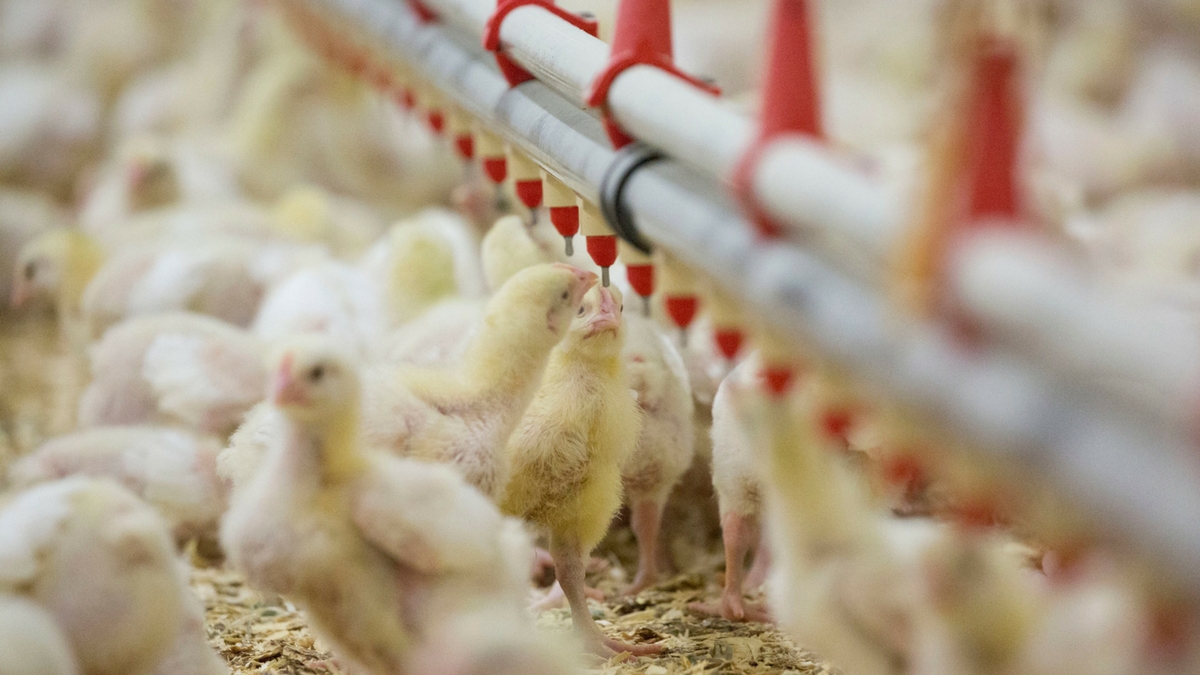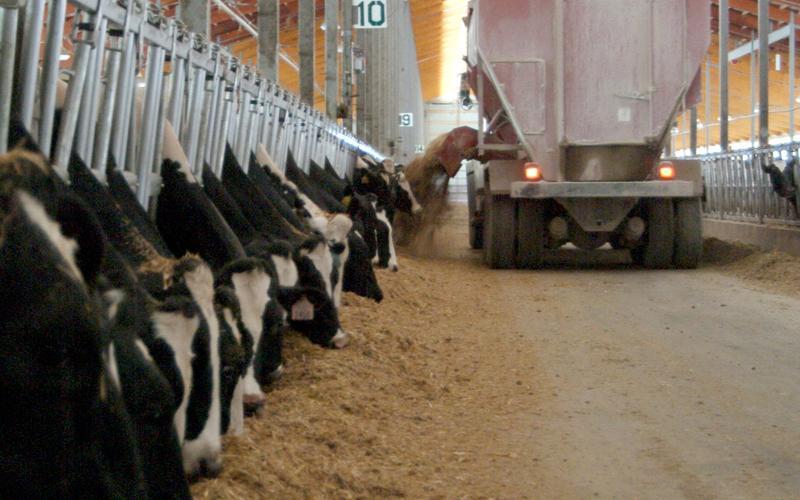Luther: Dr. Kayla Price is the poultry technical manager for Alltech Canada. In addition to sales and technical support, Price engages in research and is an avid follower of the constant changes taking place in the poultry industry. Thank you for joining us.
Kayla: Thank you very much.
Luther: First question out of the gate: Why is gut and intestinal health in birds so important?
Kayla: Whenever I think of the bird, I always think of it as a gut with lots of stuff attached to it. For the bird to do anything in terms of performance, the gut must be working to access all the feed ingredients — the nutrition — that you’re putting into the bird.
Nutrition must be absorbed so it translates into either kilos or pounds of meat, if you’re talking about meat birds such as broilers or turkeys. On the egg side, gut health must translate into egg production.
For broilers, gut health must translate into egg production and, ultimately, hatchability. Really, the question for me is, why isn’t it important? Gut and intestinal health are extremely important.
Luther: What issues do antibiotics pose to the gut and intestinal health of birds?
Kayla: That’s a loaded question. With antibiotics, it’s not necessarily that they pose issues. They’re an incredible invention; an incredible innovation in the treatment of birds. When they’re very sick, they really need to be treated with antibiotics to become healthy.
At the same time, when we’re using antibiotics at low-level preventative measures, they do the same thing as when they’re administered at high treatment levels: They’re looking to kill bacteria. The problem, or the conversation or debate, happens because antibiotics are killing any bacteria, good or bad. Antibiotics don’t decide whether bacteria are good or bad. They just kill them because that’s their job.
Some bacteria are naturally resistant. They have those resistant genes no matter what. Other bacteria become resistant because they “learn” to become resistant. As antibiotics are injected, they kill bacteria that can be killed but leave the resistant bacteria. It’s those resistant bacteria that are really the problem, as they potentially move along the food chain. That’s what people are concerned about.
We want to be able to prevent that resistance from going up and down the food chain. We want to reduce the potential for drug-resistant bacteria that show up in hospitals. It’s a complicated issue. There are a lot of sides of the debate, but it’s an issue that needs to be talked about.
Luther: It sounds like it isn’t the antibiotic itself; it’s the application, the use or overuse, or the fact that it does leave antibiotic-resistant bacteria behind.
Kayla: Yes.
Luther: That said, what is the future of antibiotic use in the poultry industry?
Kayla: You have some people saying that poultry should only be raised without antibiotics in production. But at the end of the day, I think there’s still room for conventional production. Again, we’re not looking to completely get rid of it.
It’s important to have a choice in the marketplace. Consumers should have the choice to get something that is raised without antibiotics if that is what they choose to purchase, and if that is what the retailer chooses to sell.
On the other side, there’s also the importance of the ability to choose good-quality, antibiotic-residue-free, conventional meat or eggs that are still very good for you and are affordable.
You’ll see in the marketplace that some options lean more toward poultry that is raised without antibiotics, but there are still more conventional options.
Understanding where antibiotics fit within the system is important. Again, we still need to be able to treat our birds if they need to be treated, and we also need to be able to have that choice in the marketplace.
Luther: What are the key questions and items that should be considered before pursuing an antibiotic-free program?
Kayla: I talk about it from the producer level. But from an integrated perspective, we look at things from a grand integrator level. I think one of the first things to start thinking about is your plan moving forward, and the need to have a plan. Understand what you can do when things go wrong, because inevitably, as much as we’re trying to do everything perfectly and well, something will still go wrong.
You need to have a line for birds that can ultimately be treated with antibiotics — and they will still provide good meat — and to also have a line for birds that are antibiotic-free. Then, understand what needs to happen within your system as you integrate with antibiotic-free, or “never-ever” free production, as it’s called in the U.S.
I always think of it as a holistic approach: moving from the breeder system into the hatching system and then ultimately moving down to those market birds. Think of that whole system and then, depending on where you fall in the system, consider the details. Go back to the basics of actual poultry production and rethink the details, whether you’re focusing on management in the barn, feed going into the birds or even water in the barn.
Luther: What are mycotoxins, and how much of an issue are they for birds?
Kayla: Mycotoxins come from fungi. As grain is grown, there is the potential for fungi to form on it. As the fungi start growing, they release mycotoxins. As we grind grain for feed, mycotoxins get into the feed and ultimately get into the birds.
When we’re talking about poultry production, I think one of the biggest misconceptions is the potential impact that mycotoxins can have on poultry, especially on short-lived poultry such as broilers, or even turkeys, to an extent. There’s a misconception that mycotoxins do not really have much of an impact. But mycotoxins are gut irritators. You have something at a very low level that’s irritating the gut and that you, as the producer or as the technical manager, may not recognize initially.
Longer-living birds such as layers and broiler breeds are also affected because they’re potentially exposed to mycotoxins for much longer.
Luther: What are the effects on the broilers and turkeys, specifically? There are side effects from mycotoxins. What are those side effects?
Kayla: There’s a long range of side effects from mycotoxins. When people think about indicators of mycotoxins, the initial tendency is to only consider visible side effects. Those may include huge lesions on the mouth, the side of the mouth, on the tongue or inside of the mouth. Other visual indicators appear as scabs on the combs or the wattles or could show up as lesions, erosions or ulcers along the intestinal tract.
People often overlook indicators of low-level irritation. Those indicators may be less visually obvious but may emerge as lower weights in broilers and turkeys, for example. Or, the gut irritation may create an environment for other problems. You may see another disease or another problem happening in the bird without necessarily relating it to a mycotoxin issue.
Side effects can really be a whole range of things that you may or may not see visually in the bird.
Luther: It sounds very similar to human beings, where you’ll see symptoms but not the root cause. In this instance, the mycotoxins could be the root cause. They’re causing some of these downstream symptoms.
Kayla: Yes, exactly.
Luther: What about layers and broiler breeders? What effects do mycotoxins have on them?
Kayla: Many people don’t think of layers, broiler breeders, broilers and turkeys as being similar. It would be an overgeneralization to say that they are similar, but they may show similar reactions to mycotoxins. The look of mycotoxins in layers and broiler breeders could be very similar in the sense that birds get mouth lesions, erosions, ulcers all the way down the gut and then impacting the liver.
On the low-level side, again you’re seeing gut irritation. These birds can’t translate nutrients into eggs, so your peak production could come down. Your eggshell quality could also decline.
Layers and broiler breeders are vaccinated quite a bit, so perhaps their immune system is suppressed or decreased. Then they’re not able to respond to the vaccine as they should.
In broiler breeds, you have an added factor of impacting the chicks. Then you’re dealing with a range of health issues for them.
With low-level toxin challenges, those are some indicators you may not have considered initially, but they could potentially lead to other diseases as the immune system is weakened.
Luther: Since we know that mycotoxins cause issues downstream — some of them obvious and some of them subtle — what can farmers do to take a holistic approach with a multilayered program to control the risks of mycotoxins?
Kayla: On a prevention level, whether you’re talking about low-level, moderate or even high challenges, it’s important to have a mycotoxin absorbent in the feed. Specifically, the mycotoxin absorbent you want is an inner yeast cell wall, which has a very strong static bond and a large surface area. This combination allows for relatively low levels of product — or technology —to be used to bind a very large amount of mycotoxin. You’re able to eliminate or at least greatly reduce mycotoxins in the feed. Using something like a mycotoxin absorbent is very important, as these birds run into low, medium, or high-level challenges.
Luther: So, that’s all part of what you’re calling a multilayered program.
Kayla: Absolutely. I’m talking specifically about mycotoxins, but we can’t forget that they are only a small snippet of the picture of poultry production in general. When I say multilayered, we’re not just considering potential mycotoxin challenges, whether they’re low, medium or high, but also taking into consideration all components. We’re considering management, biosecurity, feed, water and so on. You take all these factors into consideration to make sure you have the best production and most successful production.
Luther: You’ve talked about considerations for mycotoxin management and going all the way back to the source; making sure that you have high-quality ingredients, high-quality feed. It sounds like how you handle the feed is also vitally important.
Kayla: Absolutely.
Luther: Can you address that a little bit?
Kayla: Let’s say you have feed coming into your production system. If we’re talking about feed processed by a feed company, their manufacturing is highly controlled. This is a low-level challenge. However, toxins may still appear in the feed later. For example, if you place feed in a bin and there’s a humid spot for some reason, now there is a potential for fungi to grow. Suddenly, that little challenge becomes a big challenge.
It’s important to understand how feed is handled early, either at a manufacturer or feed mill, and then how it’s handled throughout the barn or facility itself. All those components can really influence how well birds of any feather perform.
Luther: What consumer demands have influenced or made significant changes in the industry?
Kayla: Consumers want to understand more about production. Maybe not necessarily at the farm level, but about the production process overall. More and more companies are moving in the direction of responding to consumer inquiries. In Canada, for example, A&W has made “raised without antibiotics” part of their retail strategy. Chick-fil-A has done the same in the U.S. As more groups promote chicken without antibiotics, it brings up more questions and people are more curious about certain aspects of their food. It can be debated one way or the other, but it’s certainly something that’s happening and something we must address, regardless.
Luther: Last question. What’s the favorite part of your job?
Kayla: That’s a hard question to answer! I think my favorite part of my job is being able to work with producers. Understanding how proud they are of what they do and being able to learn about their process is so exciting.
I also get to travel across Canada from the East Coast to the West Coast. A farm on the East Coast could have issues or successes similar to a farm all the way out in Alberta or even in my hometown of Ontario. The farms may not necessarily be able to converse, so I get to be this middle person saying, “I saw that somewhere else; maybe you should try this…” or “I’ve seen this problem somewhere else and this is what they tried.” Being that conversation starter is a wonderful thing. I get so much out of it, and I think the farmers get so much out of it. I enjoy being able to help them improve and be successful. At the end of the day, that’s what it’s about.
Luther: Kayla Price is poultry technical manager for Alltech Canada. Thank you very much.
Kayla: Thank you very much.
Dr. Kayla Price spoke at ONE: The Alltech Ideas Conference (ONE17). To hear more talks from the conference, sign up for the Alltech Idea Lab.






















